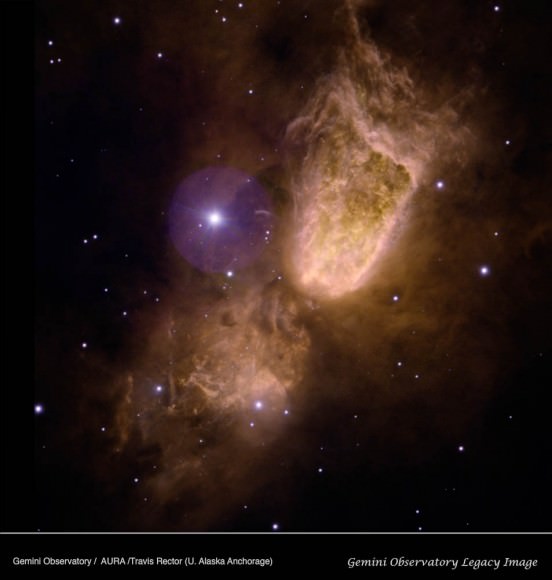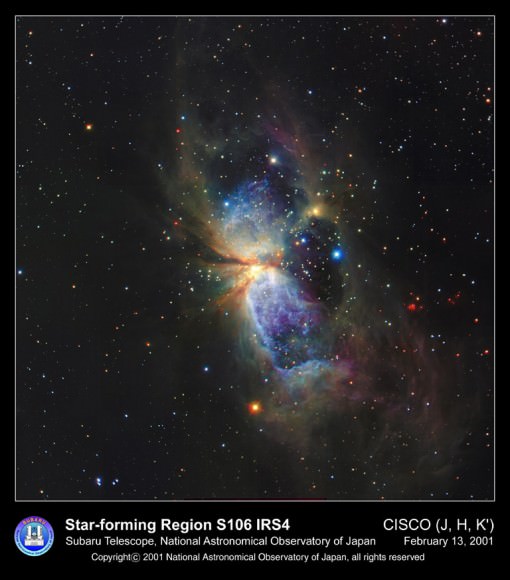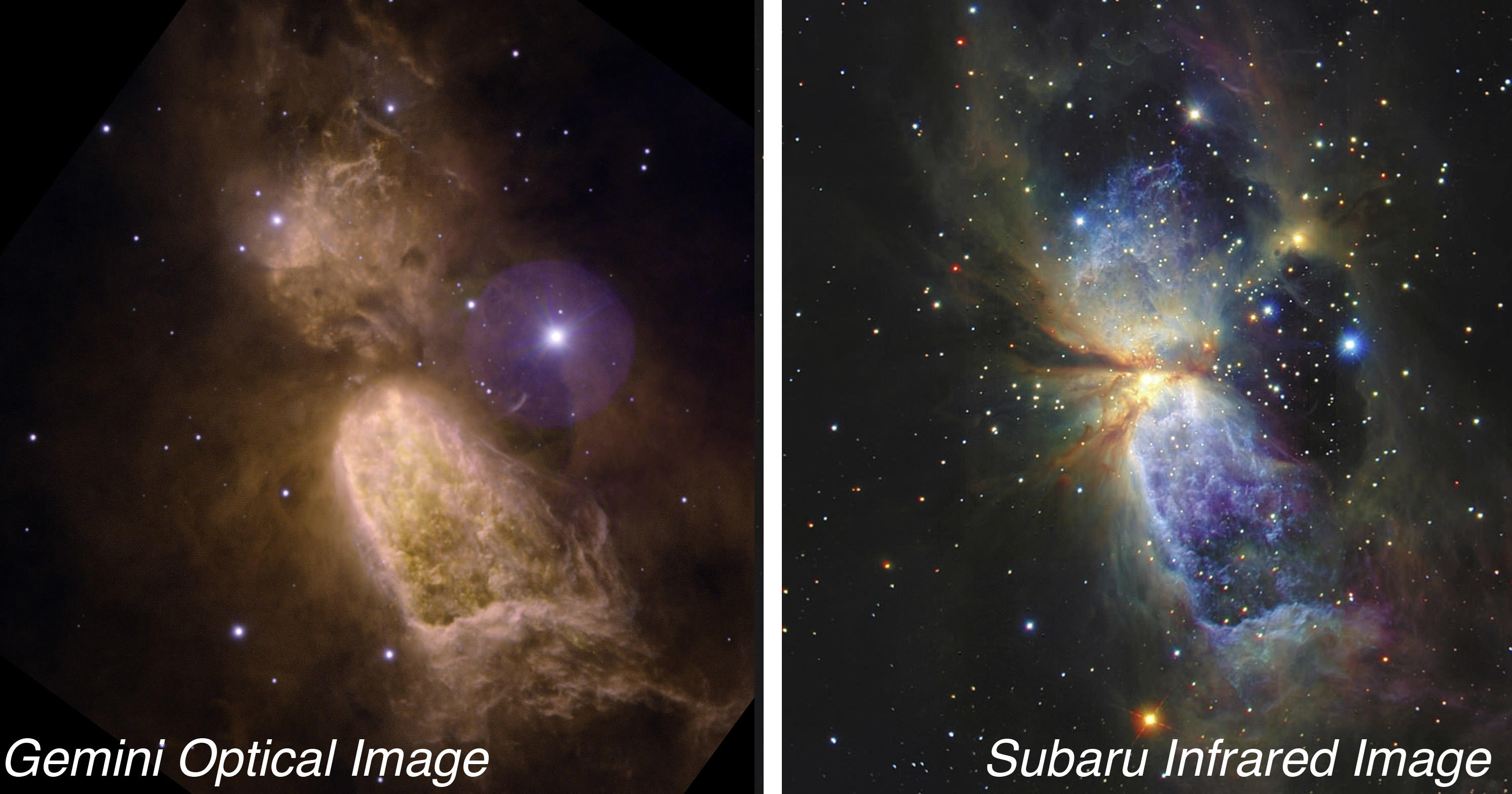[/caption]
About 2,000 light-years away, in the constellation of Cygnus (the Swan), lies Sharpless 2-106 (after Stewart Sharpless who put the catalog together in 1959), the birth-place of a star cluster-to-be.
Two recent image releases – by Subaru and Gemini – showcase their new filter sets and image capabilities; they also reveal the stunning beauty of the million-year-long process of the birth of a star.

The filter set is part of the Gemini Multi-Object Spectrograph (GMOS) toolkit, and includes ones centered on the nebular lines of doubly ionized oxygen ([OIII] 499 nm), singly ionized sulfur ([SII] 672 nm), singly ionized helium (HeII 468nm), and hydrogen alpha (Hα 656 nm). The filters are all narrowband, and are also used to study planetary nebulae and excited gas in other galaxies.
The hourglass-shaped (bipolar) nebula in the new Gemini image is a stellar nursery made up of glowing gas, plasma, and light-scattering dust. The material shrouds a natal high-mass star thought to be mostly responsible for the hourglass shape of the nebula due to high-speed winds (more than 200 kilometers/second) which eject material from the forming star deep within. Research also indicates that many sub-stellar objects are forming within the cloud and may someday result in a cluster of 50 to 150 stars in this region.
The nebula’s physical dimensions are about 2 light-years long by 1/2 light-year across. It is thought that its central star could be up to 15 times the mass of our Sun. The star’s formation likely began no more than 100,000 years ago and eventually its light will break free of the enveloping cloud as it begins the relatively short life of a massive star.
For this Gemini image four colors were combined as follows: Violet – HeII filter; Blue – [SII] filter; Green – [OIII] filter; and Red – Hα filter.

The Subaru Telescope image was made by combining images taken through three broadband near-infrared filters, J (1.25 micron), H (1.65 micron), and K’ (2.15 micron).
Sources: Gemini Observatory, NAOJ


The hourglass-shaped (bipolar) nebula in the new Gemini image is a stellar nursery made up of glowing gas, plasma, and light-scattering dust.
That would be a Z-pinch in action (Bennett pinch) or as the the current terminology goes, tangled magnetic field lines stretching and snapping!
No z-pinch as that is based on the Lorentz force from currents and here the pinching is testably and tested due to the planetary disk, AFAIU. Read the post on actual testable physics, which doesn’t contain EU religious untestable irrelevancies at all.
Perhaps YDU plasma physics as well as you could – read Alfven’s Cosmic Plasma – it’s not rocket science.
“Two recent image releases – by Subaru and Gemini…”
The Subaru image is dated Feb 13, 2001 — that’s recent? 😉
This doesn’t look like a pinched object at all. In fact, pinches are highly unstable and therefore shouldn’t be visible in space at all.
It is far more likely that this is due to a thick disk surrounding the star and the “pinch” nebula just reflects the light that can escape “perpendicular” to the disk.
sol88:
Yeah, right(!), I suppose you’re gonna tell us that this hourglass image is also the result of a so-called “Z-pinch”?
As I said in the Rare Earth story comments, hypotheses stand or fall based on the science, not who developed the hypotheses, nor why they did so.